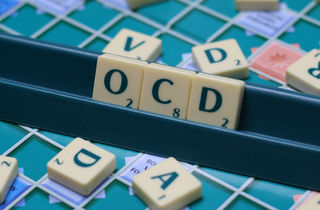OCD
Living With OCD During COVID-19
How to survive a global pandemic with obsessive-compulsive disorder.
Posted March 27, 2020 Reviewed by Ekua Hagan

The coronavirus pandemic presents a unique challenge to individuals living with OCD, to those who are continuously seeking out reassurance and certainty and have difficulty tolerating doubt and discomfort. After all, what we typically refer to as an irrational fear—that an invisible, airborne disease is sweeping through six of our seven continents, inflicting hundreds of thousands of people—is now a rational fear that we all are learning to address in real-time.
If there’s one thing we can all agree on, it’s that the COVID-19 outbreak has generated significant uncertainty: How likely am I to catch the coronavirus? What if I have it, and I don’t know it yet? When will a vaccine be ready? What if I run out of supplies at home? When will this all be over?
Contamination is an all-too-common topic of our worries, but this is especially true since the coronavirus outbreak. I know I’ve pumped more sanitizer on my hands in the last month than I care to admit. World-renowned scientists are urging us to wash our hands frequently, to avoid touching our faces as much as possible, and to practice social distancing by maintaining six feet of distance from others. You are living proof of the distress that these precautions might inadvertently provoke in a person living with anxiety:
- “But what if I forget to wash my hands and I bring the virus home from the grocery store? Could I infect myself? My children? My elderly parents?”
- “What if I accidentally touched my nose while I was outdoors? How do I know my hands weren’t contaminated? Should I isolate myself to be certain?”
- “I was very vigilant about maintaining six feet of distance, but someone at the grocery store came in close contact with me. They didn’t appear sick, but they could be asymptomatic. Do I need to get tested?”
Who wouldn’t be consumed by doubt in these circumstances, envisioning such catastrophic outcomes? As with all topics of our worries—contamination, humiliation, suffocation, etc.—we must learn to differentiate the signals from the noise.
Signals vs. Noise
Some of our worries motivate us to act; we call these “signals.” Signals are worries that are deserving of our attention and prompt us to take meaningful action. For instance, in the midst of the COVID-19 pandemic, if we go for a run and return home, our worries might motivate us to go straight to the bathroom and wash our hands for 20 seconds with soap and water, just as the World Health Organization suggests.
Now, let’s say I wash my hands thoroughly, just as instructed, and then my worries prompt me to wash them again five minutes later. If I’ve been at home, and I haven’t come into contact with anything that might be contaminated, then we can reasonably label this worry as “noise.” Noise refers to those repetitious, unproductive thoughts that create further doubt and distress. Noisy worries are not useful or worth listening to. Noise is static.
So, when you hear worries that you believe are signals (“Oh no, I think I touched the grocery cart without sanitizing it first.”), you should take actions that help you resolve that problem (“I’ll ask an employee if there’s a customer bathroom or some hand sanitizer I can use.”). On the other hand, if that worry pops up and sounds like noise (“What if the hand sanitizer is contaminated, too?!”), then that means you can’t solve it. No solution exists. You can dismiss this pesky worry, treat it as noise, and return to your task.
Set Rules for Your Own Peace of Mind
As the cases of COVID-19 escalate in the U.S., many of my clients are struggling with some version of the following questions:
- “What’s real and what’s imaginary? How do I know what to believe anymore?”
- “Am I doing too much to prepare and protect myself from the virus?”
- “Am I doing too little to prepare and protect myself from the virus?”
Often these pressing questions can lead to heightened stress and compulsive checking for new information. You can help manage your anxiety in this difficult and often confusing time by creating a set of rules around how you inform and protect yourself.
- Limit the number of times you check for information. For example, you could set daily “check the news” calendar appointments for 8 a.m. and 8 p.m., ensuring that you don’t miss any important updates.
- Limit the number of sources you check for information. If you find yourself endlessly scrolling news and social media websites to gather information, limit yourself to two or three websites that you trust to provide accurate reporting, such as the World Health Organization and the U.S. Centers for Disease Control and Prevention.
Cut Yourself Some Slack
In this time of epic uncertainty, it’s easy for individuals living with anxiety to become harshly self-critical. After all, when our desire for comfort, security, and confidence turns into a requirement, that mindset drives a great deal of our worries, fears, self-criticisms, and disappointments.
Cut yourself some slack. This isn’t easy. In fact, at times, it’s downright scary. So if you experience some regression in your work to control worries, if you feel like skipping an exposure practice of facing a fear, or if you occasionally give in to some of that buzzing, irrelevant, incessant “noise,” then give yourself a pass. Tomorrow is a new day.
Most importantly, it’s time to give up our relentless pursuit of security, comfort, and control. Yes, even in the face of a global pandemic, we can all allow for a little uncertainty, doubt, and distress.
Further reading: Stopping the Noise in Your Head: The New Way to Overcome Anxiety and Worry,




